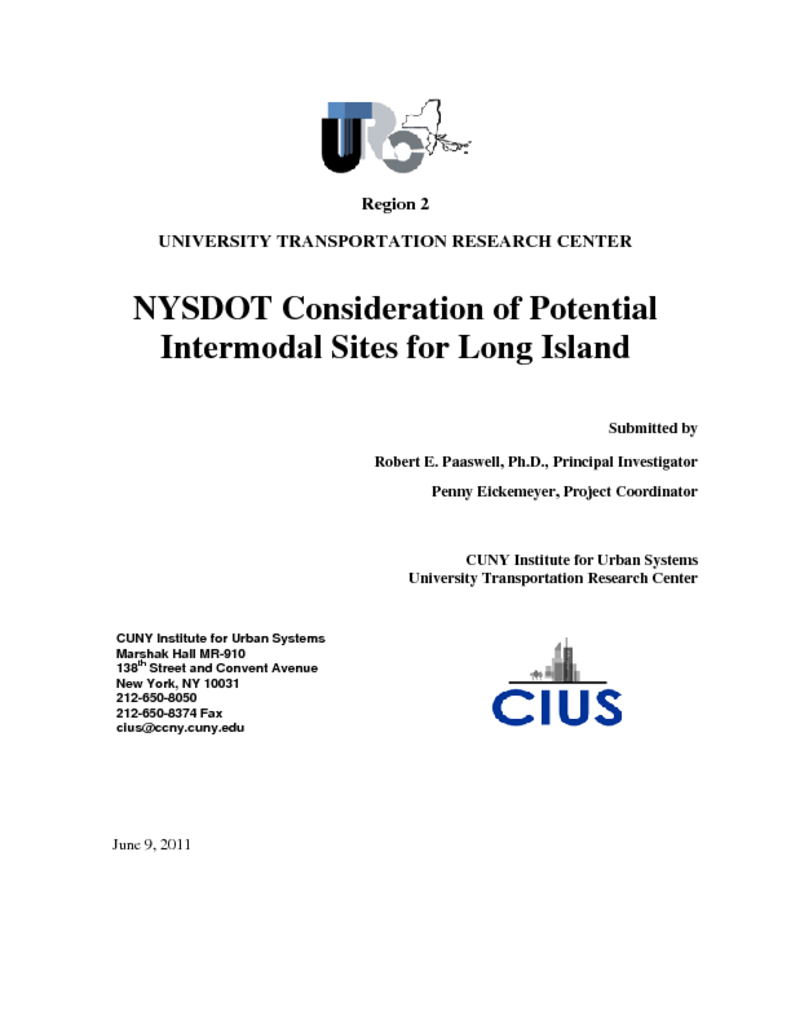This Study was prepared in response to the Governor's directive to conduct an extensive analysis of the feasibility of a truck/rail facility on Long Island. It was designed to answer three questions:
- Is an intermodal truck/rail transfer facility needed to respond to the current and anticipated volume of goods movement in Nassau and Suffolk County?
- Where should such a facility be located? • What are the economic, social, and environmental effects of such a facility and can any adverse effects be mitigated?
The research showed that there is a demand for increased freight delivery on Long Island as a result of population and employment gains and such increased delivery could reduce the number of trucks currently required to deliver freight to area businesses and industrial parks. Increased rail-freight deliveries would, in all likelihood, reduce the costs of these local freight deliveries. Industry experts consulted for this study agree that there is a likely market for delivery of freight by rail to Nassau and Suffolk Counties, but that the demand for bulk freight yards may be more immediate than is the demand for container yards and that the demand for containerized rail freight would be significantly increased if a cross-harbor tunnel were built. Experts generally agree that a significant demand for containerized freight will also depend upon the availability of conveniently accessible warehouse facilities.
The study team identified potential sites for the facility and assessed the “pros” and “cons” of each and reviewed the previous work on the LITRIM project. Some recommendations for future action included:
The Pilgrim FEIS site evaluation should rigorously address a number of significant environmental, legal, public-health, and environmental justice issues that were identified in the Study Team’s interviews with project stakeholders such as mitigating the potential adverse impacts of light and noise on the patients of Pilgrim State Hospital, some of whom live as close as 350 feet from the proposed site; the impact of the transfer facility site on the adjacent Edgewood State Preserve; and the site’s location within the Oak Brush Plains Special Groundwater Protection Area.
The Study Team distinguished between the two major types of truck-rail transfer facilities, bulk and containerized, and found that: while there might be some short-term advantages to combining bulk and container operations, as rail-freight markets develop in the near-term, there is neither any compelling long-term need to combine these operations nor any significant near-term demand for container operations. There is a need for multiple yards on Long Island both for bulk traffic and (with the development of a doublestack cross-harbor rail-freight tunnel) for containers and that there is an immediate demand for at least one major bulk transfer yard on Long Island. In addition, if a double-stack rail-freight tunnel is built across New York harbor, at least two major containers (or bulkand- container) yards will be required.




